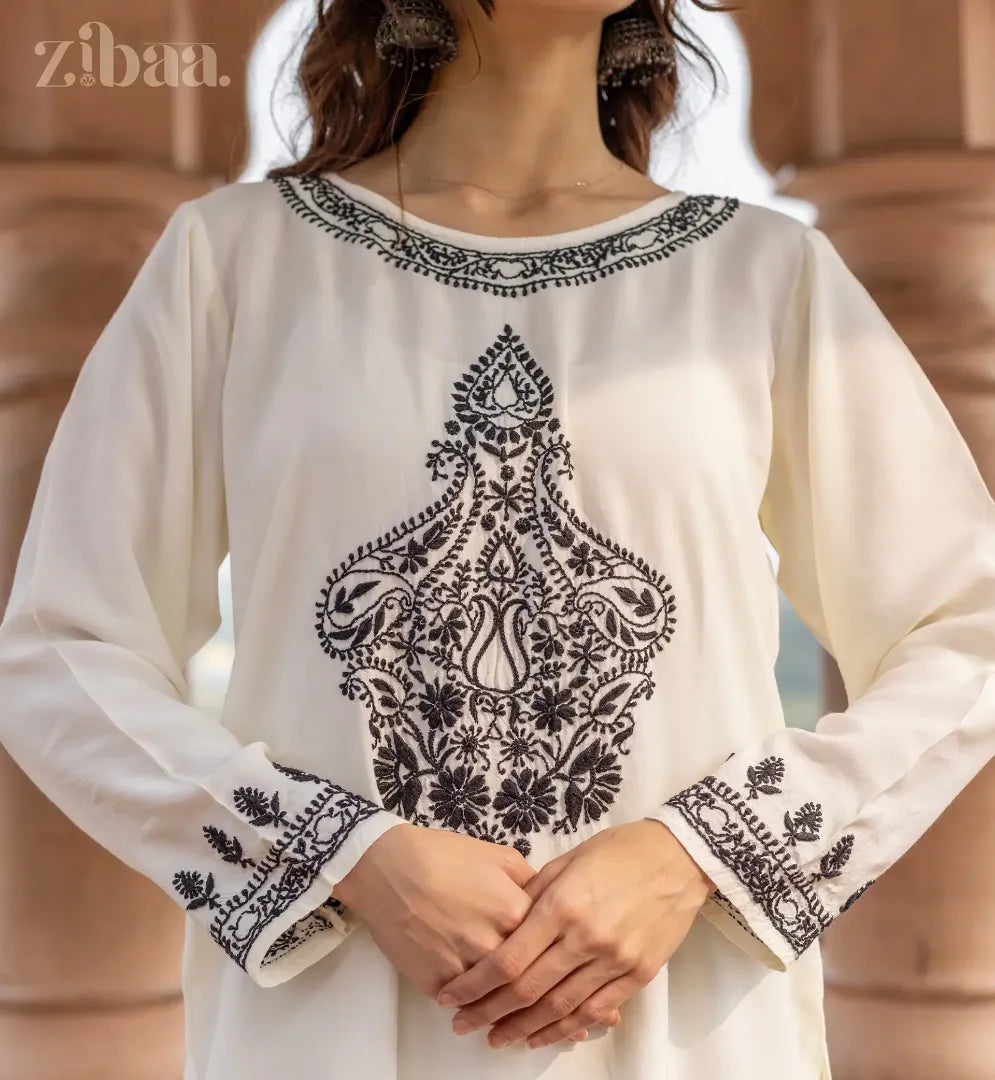Chikankari is one of India’s most cherished embroidery traditions, known for its delicate handwork and intricate detailing. When done on black fabric, the contrast of soft white or tone-on-tone threadwork against a dark background creates a look that is both elegant and timeless. However, as Chikankari’s popularity has grown, so has the number of machine-made imitations.
Understanding the difference between hand-embroidered and machine-made Chikankari is essential if you want to own an authentic piece of craftsmanship. This guide will help you learn how to identify real Chikankari on black fabric, what makes it special, and why supporting handmade work matters.
The Essence of Handcrafted Chikankari
True Chikankari is more than just decorative embroidery. It is an art form that originated centuries ago in Lucknow and involves a labor-intensive process where artisans create intricate designs entirely by hand. Each motif carries subtle imperfections that make it one of a kind.
Key characteristics of authentic hand-embroidered Chikankari
• Slight variations in stitch size and spacing that reflect human touch
• Soft, delicate texture with raised stitches that add dimension
• Loose threads and knots visible on the reverse side
• Uneven outlines in patterns that reveal hand-guided work
• A natural rhythm in the design rather than mechanical precision
Every hand-embroidered Chikankari piece carries the personality and effort of the artisan. It is not just a product, but a story of skill, patience, and heritage.
How Machine-Made Chikankari Differs
Machine-made Chikankari seeks to replicate the look of hand embroidery but lacks the same depth, softness, and individuality. Machines follow pre-programmed patterns with exact repetition, which makes every piece look identical.
Common traits of machine embroidery
• Perfectly uniform stitches without variation
• Flat surface with no raised texture
• Smooth reverse side with no loose threads
• Mass-produced consistency lacking human warmth
• Synthetic threads that appear shiny instead of matte
While machine-made versions are faster and cheaper to produce, they do not carry the artistic depth or traditional value of handcrafted Chikankari.
Why Black Fabric Highlights the Difference
Black fabric is a strong test for authenticity. The dark background makes every stitch visible, exposing the fine details of craftsmanship. When you observe Chikankari on black fabric closely, you can instantly notice the distinction between handmade and machine work.
How to evaluate
• Run your fingers gently across the embroidery. Hand stitches feel slightly raised and soft, while machine stitches feel flat and smooth.
• Examine the back of the fabric. Authentic handwork will show small knots and thread ends, while machine embroidery looks clean and seamless.
• Look at the thread finish. Handmade Chikankari uses matte cotton threads that contrast beautifully with black, whereas machine embroidery often uses shiny synthetic threads.
• Observe the pattern flow. Hand embroidery has a natural irregular rhythm, while machine patterns are perfectly aligned and repetitive.
Understanding Stitch Techniques
Traditional Chikankari involves over thirty different stitches such as shadow work, phanda, and murri. Each stitch requires careful precision and patience. Machines, however, can only replicate the look of a few of these techniques superficially.
Common hand stitches used in Chikankari
• Bakhiya: The shadow stitch that gives a delicate translucent effect
• Phanda: Tiny knots resembling small dots
• Murri: Rice-shaped stitches adding texture and depth
• Hool: A small eyelet pattern made by piercing the fabric
Handcrafted Chikankari uses these variations to create depth, while machine embroidery relies on simple flat thread fills.
How to Identify Authentic Chikankari Before Buying
Buying a black Chikankari kurti or dupatta requires a little observation and awareness. A few quick checks can help you differentiate between genuine hand-embroidered pieces and factory-made imitations.
Checklist for authenticity
• Inspect both sides of the fabric closely under natural light
• Feel the texture to check for softness and dimensionality
• Look for minor irregularities or thread knots
• Verify if the seller or brand provides information about the artisans or GI certification
• Be cautious of deals that appear too cheap for intricate work
Authentic Chikankari takes time to create. Low prices usually mean machine-made products.
Why Authentic Chikankari Is Worth the Investment
Every hand-embroidered piece supports skilled artisans and keeps a centuries-old craft alive. These creations are sustainable, made in small batches, and designed to last for years when properly cared for. Beyond fashion, authentic Chikankari represents cultural preservation and ethical craftsmanship.
Benefits of investing in authentic pieces
• Long-lasting embroidery that does not unravel easily
• Unique craftsmanship that makes every piece exclusive
• Eco-friendly production with minimal waste
• Direct support for artisan communities
• Higher aesthetic and cultural value over time
By choosing authentic Chikankari, you are not only buying fashion but also becoming a patron of traditional Indian artistry.


